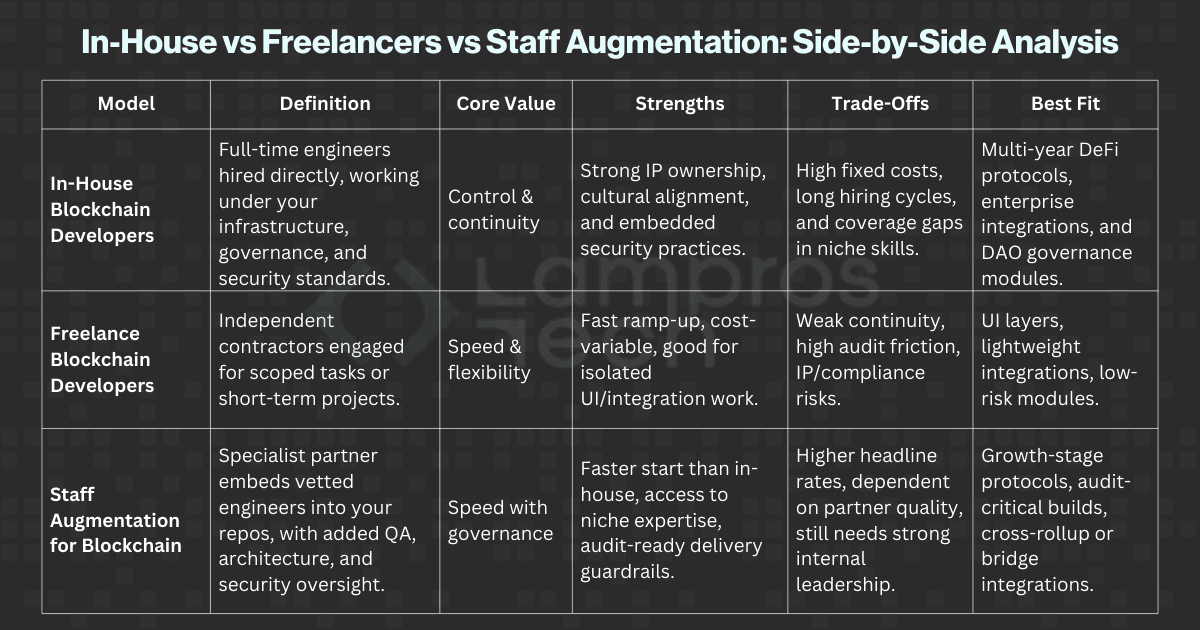Contact Us
If you're working on something real — let's talk.
Development & Integration
Blockchain Infrastructure & Tools
Ecosystem Growth & Support
© 2025 Lampros Tech. All Rights Reserved.
Published On Sep 02, 2025
Updated On Sep 02, 2025



Growth Lead
FAQs

The best way to hire blockchain developers in 2025 depends on your project’s stage and priorities. In-house teams provide continuity and IP ownership but are costly and slow to scale. Freelancers offer speed and flexibility but often struggle with audit readiness and continuity. Staff augmentation balances both, embedding vetted blockchain engineers into your workflows with governance and security built in.

The cost of hiring a blockchain developer in 2025 varies widely: in-house engineers in the U.S. earn over $180,000 annually, while freelancers may charge $50–$150 per hour depending on skills and geography. Staff augmentation rates range from $30–$100 per hour, but include QA, audit readiness, and niche expertise, making total costs more predictable.

Freelance blockchain developers can be reliable for scoped tasks such as UI dashboards or lightweight integrations. However, for DeFi protocols or DAO governance tooling, freelancers pose risks around continuity, security, and audit readiness. These projects often require structured governance and security guardrails that freelancers alone cannot provide.

Staff augmentation in blockchain development means embedding engineers from a specialist partner directly into your team’s repos, CI/CD pipelines, and governance processes. Unlike outsourcing, staff augmentation keeps delivery under your control while adding niche expertise, structured reviews, and audit readiness support. It’s widely used in 2025 for cross-chain builds, DAO upgrades, and audit-critical phases.

Choosing the right hiring model in 2025 requires measuring trade-offs against your roadmap. In-house works best for multi-year protocols and enterprise integrations. Freelancers fit scoped, low-risk modules. Staff augmentation suits growth-stage teams, cross-chain integrations, and audit-heavy work. The smartest approach is to evaluate models across dimensions like time-to-start, total cost of ownership, security posture, and continuity.